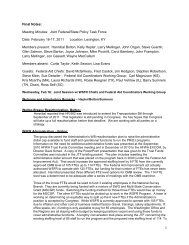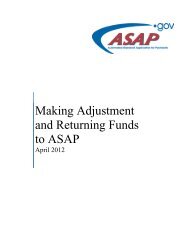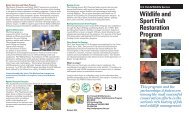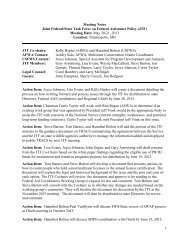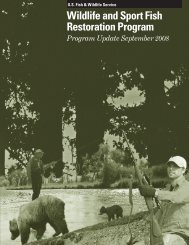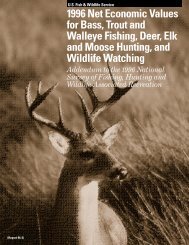Financial Returns To Industry From The Federal Aid - Wildlife and ...
Financial Returns To Industry From The Federal Aid - Wildlife and ...
Financial Returns To Industry From The Federal Aid - Wildlife and ...
Create successful ePaper yourself
Turn your PDF publications into a flip-book with our unique Google optimized e-Paper software.
Figure 4. <strong>Wildlife</strong> Restoration Excise-Tax Collections (1939-2009) in 2009<br />
dollars<br />
Although industry has been a long-term partner in the development <strong>and</strong> continued<br />
success of these programs, today‟s competitive business climate presents difficult<br />
challenges to companies. <strong>The</strong> <strong>Wildlife</strong> Restoration excise tax is often one of the top<br />
three expenses for a company, challenging the business value of paying these taxes,<br />
particularly in the absence of a measure connecting this expenditure to company<br />
profitability. Traditional communications over the years have described <strong>Wildlife</strong><br />
Restoration “success” in terms of how much money was spent, not how much was<br />
returned. While this approach is valuable, it is only mildly effective from a business<br />
perspective as companies measure success in earnings.<br />
Table 1 provides a comparison between <strong>Wildlife</strong> Restoration excise-tax collections <strong>and</strong><br />
hunter purchases of tax-related equipment items for the last seven cycles of the<br />
National (conducted every five years between 1955 <strong>and</strong> 2006). In years prior to 1970,<br />
purchases of hunting equipment are reported as an aggregate thereby not allowing<br />
itemization of spending on tax-related items. It is also important to note that the items<br />
impacted by tax collections changed over this period <strong>and</strong> adjustments were made to<br />
calculations to accurately reflect spending on only those items where taxes were<br />
collected. For example, bows <strong>and</strong> arrows were not subject to excise-tax collections prior<br />
to the 1975 survey, therefore they are not included as part of hunter purchases of taxrelated<br />
items in 1970.<br />
15




